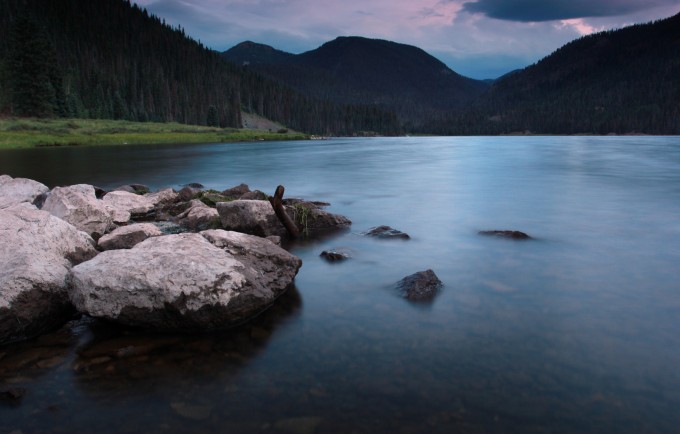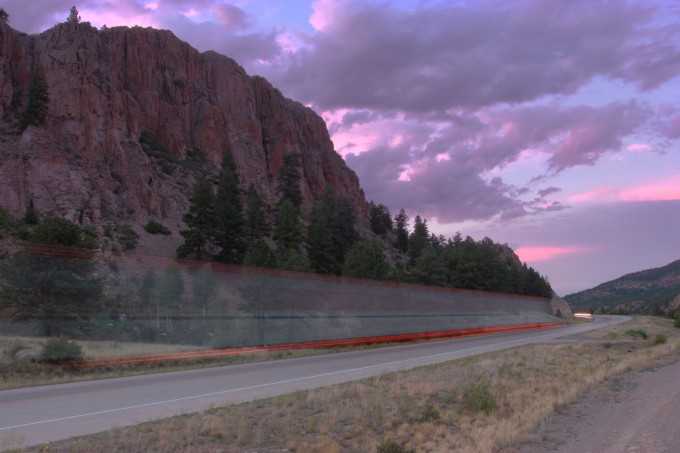Photoshop Touch Impressions
By Kyle Sanders
Packing the camera bag for a family vacation is a cruel exercise in survival of the fittest, as gear that takes too long to set up or too much space simply will not make the cut. I was going out on a limb to bring a new toy like PS Touch along when you are with folks as social and restless as my group, but in the end I was quite satisfied.
Background
My experience with Photoshop is from a graphic design background where we would do extensive editing beyond the realm of retouching. I prefer photography that appears natural by relying more on physical filters rather than post production ones, however I have come to accept that for some instances a bracketed image and gradient masks can be better than a neutral gradient filter. My other barrier is the time investment that is required: once you sit down at a computer it never takes “just five minutes”, I want to spend my hobby time behind a lens, not a keyboard. For this experiment I will be shooting to an Eye-Fi card, directly transferring to my Samsung Galaxy 10.1, editing and then publishing to various social media venues as I went.
Expectations
To be clear, I am not a fan of “hipster filters” such as you would find in Instagram or Picasa – if I wanted my photos to say “RVP” on the top, I would shoot on Fuji Velvia. PS Touch would need to do much more! Minimum expectations where for the software to have 3+ layers with some sort of graduate a transparency, hue adjustments as well as levels or curves adjustments. Functional requirements aside, I also expect for the app to have a reasonable file management system as well as quick and intuitive user interface design. My plan is to preview and select the day’s top images, edit, and then publish them all while reasonably engaged in the social atmosphere of the trip.
Hesitations
Photoshop Touch has one particularly nasty limitation that was nearly a deal breaker for me: maximum image size of 1024×1024. I went back and forth between the capabilities of this and the maximum image size of Nik software’s Snapseed right up until the day before the trip. With no Android support in sight, and the acceptance that web publishing is never going to need 18mp, it was pretty much settled – then the good news that there was an update allowing a new maximum resolution of 2048 pixels per side.
Positive Elements
The key to this entire exercise was that I could take pictures, edit them and then publish them without touching a computer, as even to having to simply download and transfer the pictures with a laptop would have made this moot. Gradient Fade really did act like a layer mask on the full fledged version of PS. This allowed me to use bracketing as an after-the-fact neutral graduated filter. Curves worked better than expected, both in ease of use and technical performance. This transformation could recover detail from blown out skies much better than I had anticipated. Layer duplication was an unexpected boon, as when combined with the above mentioned curves tool I could edit different regions of a photo to different effects, combining them with fades. Layers have a non-permanent transparency setting, allowing me to tweak a layer for effect, then dial it down in opacity to taste. The User Interface is a thing of beauty. Snappy responses combined with logical placement of tools and effects made editing quick and efficient.
Negative Elements
2048×2048 maximum resolution is not easy to overlook. I understand that tablets simply do not have the RAM to handle 10 layers of D800e images, but it is a tough pill to swallow. Alignment of multiple images is nearly impossible – if you are overlapping images, use a tripod. Cropping an image at an angle to correct improper leveling is less than ideal, avoid this if at all possible. This mobile version of Photoshop will remedy your sloppy shooting far less than the full version!
Load times of images and some filters are long for a mobile app, but forgive able when you consider what it is doing. This is not an app that you can switch back and forth between at whim. If you are an iPad person, this may not even seem unusual, but with Android I have become accustom to changing music or reading messages as easily as you would on a desktop. If you do switch applications from and back to Photoshop Touch, it would often reload the app, meaning all work from the last save point was lost.
The User Interface does have a few quirks, such as saving on exit as opposed to at will. These are more idiosyncrasies rather than deal breakers.
Closing Impressions
Photoshop Touch is a compelling tool if you want to have a photographic workflow that is independent of a computer. It is capable and nimble enough in the effort required to use as well as its results. If the 2048 pixel size is a limitation to you, perhaps a mobile based workflow would not be precise enough anyways. I prefer dual 22″+ monitors for client work, so an iPad or Android table will be small even in the form factor. Editing a bit each evening allowed me to pace myself, as opposed to a multi-hour Photoshop session once I returned home at the end of the trip. Using a tablet as opposed to a laptop not only let me be more social by working wherever I wanted to (realistically, it is difficult to use a trackpad for photo editing on a laptop in your lap), but it also is less closed off to other family members. We all spend enough hours of our week sequestered in cubicles and behind keyboards to pay the bills, so I do not want to fill my personal time with the same activity.
Images/Examples:




Thank you for a very good insight on photoshop touch. I still cannot imagine using an app and ipad for that matter to edit wedding photos. But a few years from now, that is probably going to be the only way to do so.
I tried to use this. I think the situation is that if you are a Photoshop “pro” it’s going to be hard to stomach. If your used to something else much more “consumer” then this will be a big upgrade.
I found my “finger” wasn’t accurate enough to do what I wanted all the time. So I had to limit my edits to global image edits, or spot edits where accuracy isn’t required. I guess you could use a stylus.
But at the end of the day, if you want to edit on a tablet, there is only 1 REAL Professional choice, and that’s using REAL Photohop on a real computer..which means Microsoft Surface Pro.
I tried a few drawing apps and found them practically unusable with my finger – a stylus worked much better, but was still a far cry from my Wacom tablet. Other than the obvious precision difference, the ergonomics of working on a tablet vs a real computer at a desk are pretty substantial.
It sounds like we have a similar all-or-nothing view on computers, so consider this: PS-Touch can be a very travel-friendly preview tool for your work. A tablet, especially an iPad mini, has many advantages over even a small laptop as small as a MacBook Air. PS-Touch lets your work in an environment that is familiar with unique (for an app) tools that will allow you to try out some edits on your photos from the day while relaxing between adventures. Exposures not long enough? Need more frames for an image stack? Great, go out the next day with an adjusted shooting plan. I think of it like how you would use “dailies” in a movie shoot!
As I mentioned to Neil, layers is where the app separates itself from other image manipulation apps. I like to use the various layer blend modes for particular types of photos, and having that available on a tablet is something you don’t get with Snapseed, VSCOcam, or any of the other fine apps.
Kyle,well written ,concise and interesting,well done.My question is whether you’ve tried “filterstorm-pro”and your opinion of it.I use it on a regular basis and have found it quick and easy as all work is done on a low resolution image,the effects added to the high resolution image when you’ve finished all you’re adjustments.The use of brushes is very fine and adjustable and layers are available.
I’m in no way suggesting one of these is better than the other but I would be interested in your views,
All the best,Neil.
Thank you! I have not used that app before, but it sounds interesting – I was wishing there was a way to make some changes on a app that would translate those to a “full sized” program for later editing. Photoshop mobile will actually do this too, but the 2048 pixel file size makes it a bit pointless. Does it do layers? To me, layers are what photoshop is all about!